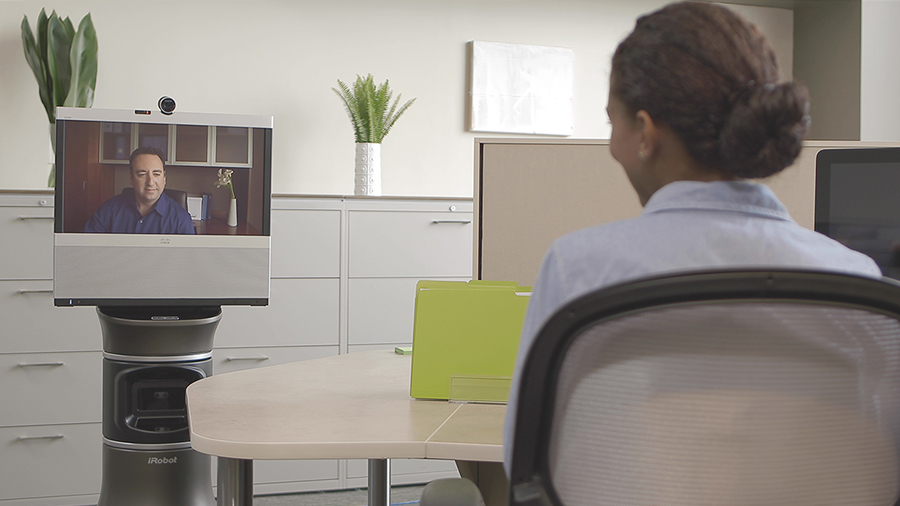The major business innovations that will boost your productivity in 2015
Big, bold, biz innovations

What will 2015 bring in terms of innovative technology which could positively impact your company? According to the experts, robotic telepresence, faster airport security check-ins, mobile payments, and other advancements will change how we do business and stay productive. Here's a small collection of major business innovations to watch for throughout this year.
1. Better e-signatures
Digital signatures have been around for years, but they often don't quite match up with existing business processes. For example, there's no way to track whether a document has been signed when it comes in through an alternative email address. A company called Kofax will introduce new digital signature tech that integrates into business processes and apps, promising to meet regulatory compliance requirements and offer more analytics.
"Enterprises that recognise the value of digitising processes need e-signature capabilities that provide a richer customer experience, while streamlining operations, improving compliance and delivering assurance that a digital signature is trustworthy. New innovations coming with e-signatures will completely integrate into enterprise systems of records, provide analytics to monitor process performance and become an integral part of enhancing customer service," says Grant Johnson, a spokesperson for Kofax.
2. Robotic telepresence
In 2013 and 2014, technology advanced to the point where a roving telepresence robot became more viable. Companies like Suitable Tech Beam Pro could deploy one to a conference room, and let someone working from home join a meeting. However, these bots were more of a curiosity and not something you might see on a regular basis.
That will change this year as the technology has proven itself and is now ready to go mainstream. Telepresence robots like the iRobot Ava 500 could show up at your next team meeting, mostly thanks to how the integration software taps into corporate networks and makes the tech more viable.
"In 2015, tech innovation will be led by applications developed specifically for vertical markets," says Ron Gaboury, CEO of Yorktel, a company that helped develop the software and integration features for the Ava 500 in conjunction with iRobot.
"Video communication, for example, is no longer used solely for traditional calls from behind a desk or conference room, but rather for practical business applications such as improving customer service or making healthcare available to people – even those in the most rural areas. Of note is that these applications significantly reduce the numbers of patients unable to schedule appointments with their doctors, as well as the amount of superfluous admissions or readmissions."
Sign up to the TechRadar Pro newsletter to get all the top news, opinion, features and guidance your business needs to succeed!
3. Mobile payments in business
Mobile payments through new services like Apple Pay went mainstream in 2014, but businesses of all shapes and sizes will jump on board in 2015, embracing the concept beyond just the retail store. It will be possible to use an NFC terminal to pay employees when they hold it over the reader and authenticate with a fingerprint, or to calculate expenses automatically when tabulated from the mobile payments an employee made on a business trip.
4. The rise of biometrics
In 2015, the great promise of biometrics will finally come to fruition. We already witnessed the advent of two-factor authentication using devices like the Yubico FIDO hardware key, which must be present in order to gain access to a computer. This year, authentication that requires you to prove that you really are you, so to speak, will become much more widespread.
"In 2015, we will continue to see large-scale adoption of biometrics in the enterprise for not just traditional physical access control, but also for logical access to information or systems," says Derek Northrope, the Associate Director and Head of Biometrics at Fujitsu Consulting (Canada) Inc.
He continues: "With some recent large-scale data breaches, both via hacking (i.e. Sony) and via the transfer of login credentials (i.e. Edward Snowden), this trend of using biometrics is going to continue. We will also start to see a reduced cost of adoption for Biometrics-as-a-Service offerings (BIOaaS), meaning that the return on investment from reduced fraud, theft or reputational damage will be greatly enhanced."
John Brandon has covered gadgets and cars for the past 12 years having published over 12,000 articles and tested nearly 8,000 products. He's nothing if not prolific. Before starting his writing career, he led an Information Design practice at a large consumer electronics retailer in the US. His hobbies include deep sea exploration, complaining about the weather, and engineering a vast multiverse conspiracy.
